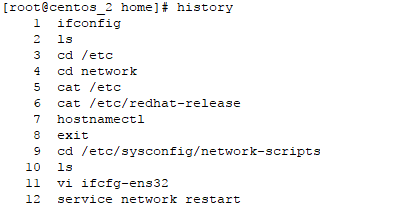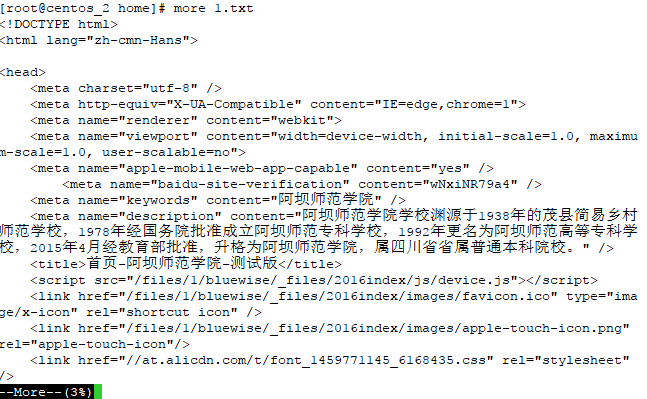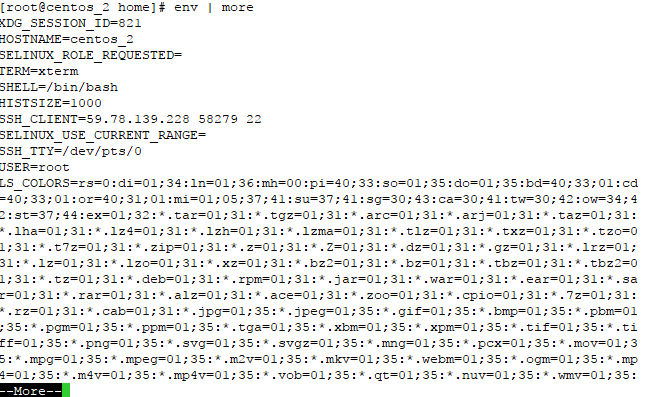1. history命令:历史命令
[root@centos_2 home]# history

如果要快速重新执行列表中的某条命令,可以使用“!命令编号”:
[root@centos_2 /]# !9
2. pwd命令:当前目录
[root@centos_2 home]# pwd

3. cd命令:切换目录
切换到当前用户的主目录:
[root@centos_2 home]# cd

切换到当前用户的根目录:
[root@centos_2 ~]# cd /

4. cat命令:显示文件内容
[root@centos_2 home]# cat url.txt

5. touch命令:创建文件
[root@centos_2 /]# touch linux.txt

如果文件已经存在,touch命令会更改文件的创建时间:

命令 ll 的意思是 ls -l,它的作用是显示文件和目录的详细属性。
6. env命令:查看环境变量
[root@centos_2 /]# env

7. whoami和who命令:查看用户
[root@centos_2 /]# whoami

[root@centos_2 /]# who

8. more命令:分页显示
[root@centos_2 home]# more 1.txt

按下空格键可以显示下一屏的内容;按下回车键显示下一行的内容;按下B建显示上一屏;按下Q键则退出显示。
9. 管道
务必记住!
管道技术:Linux系统支持把一个命令的输出结果作为另外一个命令的输入。
输出结果的命令 | 输入结果的命令
[root@centos_2 home]# env | more

创建文件,然后显示所有文件:

Linux管道技术还支持多个管道之间的连接。也就是说,管道中接受管道输入的命令,其输出结果可以作为其他命令的输入。例子:

10. grep命令:过滤信息
grep命令用于从文件或命令输出内容中查找满足指定条件的行数据
yum list|grep telnet

11. yum命令:软件包管理器
yum -y install :安装过程自动选择 y,全自动;
yum install:安装过程中手动选择 y 或 n 。
